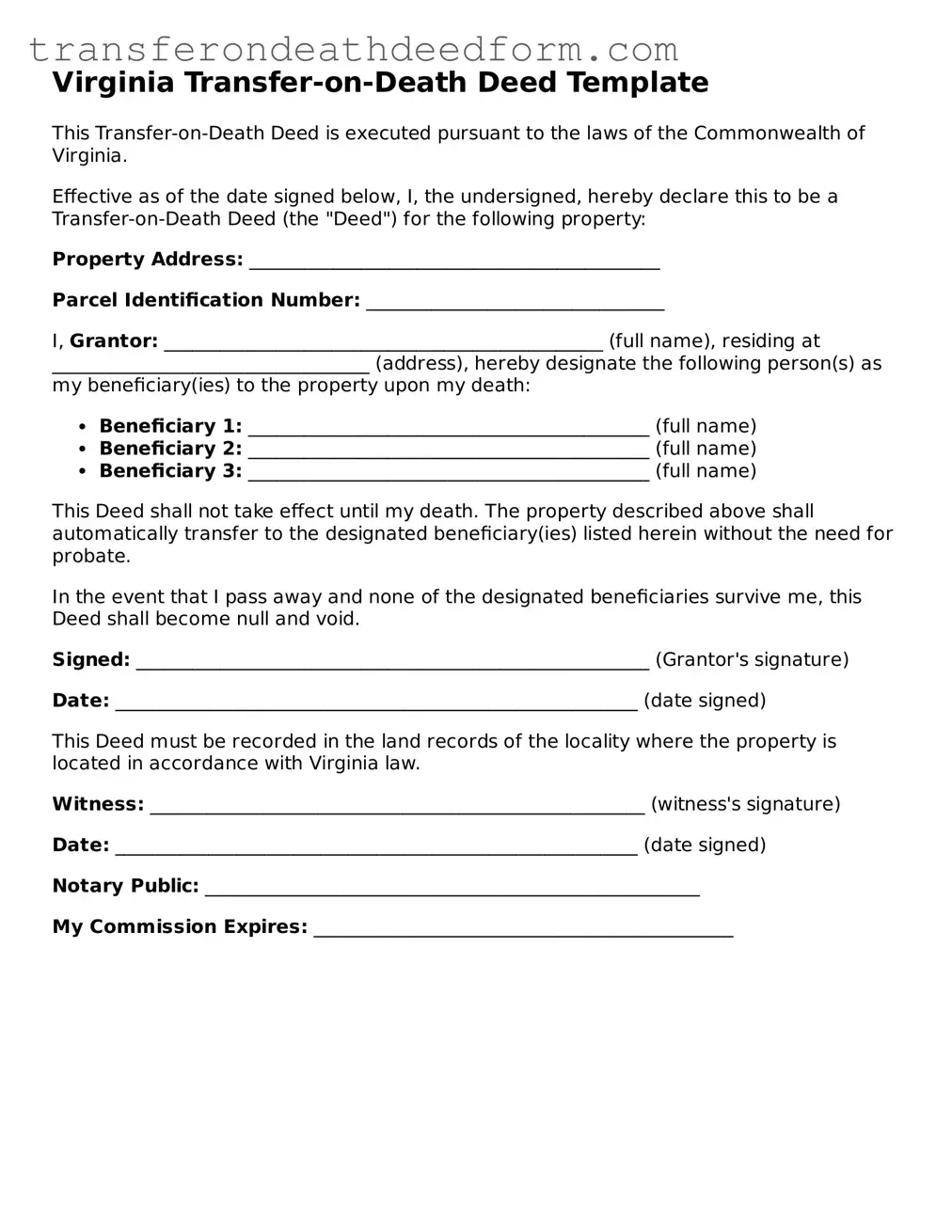Virginia Transfer-on-Death Deed Template
This Transfer-on-Death Deed is executed pursuant to the laws of the Commonwealth of Virginia.
Effective as of the date signed below, I, the undersigned, hereby declare this to be a Transfer-on-Death Deed (the "Deed") for the following property:
Property Address: ____________________________________________
Parcel Identification Number: ________________________________
I, Grantor: _______________________________________________ (full name), residing at __________________________________ (address), hereby designate the following person(s) as my beneficiary(ies) to the property upon my death:
- Beneficiary 1: ___________________________________________ (full name)
- Beneficiary 2: ___________________________________________ (full name)
- Beneficiary 3: ___________________________________________ (full name)
This Deed shall not take effect until my death. The property described above shall automatically transfer to the designated beneficiary(ies) listed herein without the need for probate.
In the event that I pass away and none of the designated beneficiaries survive me, this Deed shall become null and void.
Signed: _______________________________________________________ (Grantor's signature)
Date: ________________________________________________________ (date signed)
This Deed must be recorded in the land records of the locality where the property is located in accordance with Virginia law.
Witness: _____________________________________________________ (witness's signature)
Date: ________________________________________________________ (date signed)
Notary Public: _____________________________________________________
My Commission Expires: _____________________________________________
